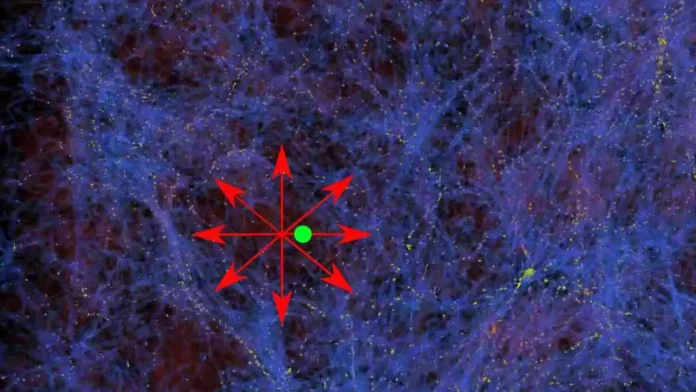The universe is an ever-expanding entity, characterized by the movement of galaxies away from each other, an occurrence directly linked to the Hubble-Lemaître constant. However, the precise value of this constant has been a point of contention among scientists, leading to what’s known as the “Hubble tension.” Addressing this scientific puzzle, researchers from the University of Bonn and the University of St Andrews have proposed an intriguing solution using an alternative gravitational theory known as Modified Newtonian Dynamics (MOND). This groundbreaking revelation might hold the key to resolving the long-standing discrepancy in measuring the rate of cosmic expansion.
1. Understanding the Hubble-Lemaître Constant
Edwin Hubble, an American astronomer, laid the groundwork for understanding the correlation between the distances of galaxies and their respective speeds of recession. This relationship forms the basis of the Hubble-Lemaître constant, a critical parameter in cosmology essential for estimating distances between celestial bodies within the universe.
1.1 Galaxies’ Movements and Distance Calculations
To comprehend the speeds at which galaxies move apart, scientists rely on accurately determining their distances. This necessitates the use of the Hubble-Lemaître constant as a multiplying factor. For example, distant regions of the universe reveal astounding speeds—around 244,000 kilometers per hour per million light-years.
2. Local Matter Density and Gravitational Effects
Dr. Indranil Banik from the University of St Andrews sheds light on an interesting phenomenon: galaxies within denser regions appear to expand faster due to gravitational forces exerted by the surrounding matter. This discrepancy in observed velocities can be attributed to local ‘underdensity,’ where the gravitational pull influences galactic movements.
2.1 Deviations and Observational Challenges
Recent studies measuring galaxy speeds from considerable distances have revealed velocities four times faster than anticipated. This conflicts with the standard cosmological model, suggesting irregularities in matter distribution, known as “underdensity” or “bubbles,” which significantly impact galactic motion.
3. The Role of Modified Newtonian Dynamics (MOND)
Forty years ago, physicist Mordehai Milgrom proposed MOND as an alternative gravitational theory. Despite its outsider status, MOND’s predictive capabilities align with the recent discoveries of ‘bubbles’ within the universe. By considering gravitational behavior distinct from Einstein’s theories, MOND offers a potential resolution to the Hubble tension.
3.1 Implications and Future Perspectives
If MOND’s assumptions about gravity accurately represent reality, the discrepancy in cosmic expansion measurements could be reconciled. This would consolidate the universe’s expansion under a single constant, attributing observed deviations to irregularities in matter distribution rather than underlying gravitational principles.
4. Conclusion: A Paradigm Shift in Cosmic Expansion Understanding
In conclusion, the utilization of MOND as an alternative gravitational theory presents a promising path to resolve the perplexing Hubble tension. This groundbreaking revelation challenges conventional cosmological models, potentially revolutionizing our understanding of the universe’s expansion dynamics.
5. FAQs on Hubble Tension and MOND
The Hubble tension refers to the discrepancy or inconsistency in measurements regarding the rate of cosmic expansion. This inconsistency holds significant importance in cosmology as it challenges our understanding of fundamental aspects of the universe’s expansion, raising questions about the accuracy of current models and the nature of cosmic dynamics.
The Hubble-Lemaître constant serves as a crucial parameter in estimating the speeds at which galaxies move away from each other due to the universe’s expansion. It helps calculate distances between celestial bodies, forming the basis for understanding the rate and dynamics of cosmic expansion.
Local matter density influences the observed speeds of galaxies in certain regions of space. Galaxies within denser regions appear to move at faster speeds due to gravitational effects exerted by surrounding matter. This discrepancy in observed velocities contributes to the Hubble tension by affecting measurements of cosmic expansion.
MOND, proposed by physicist Mordehai Milgrom, offers an alternative perspective on gravitational behavior compared to conventional Einsteinian theories. It introduces modifications to gravitational laws that can potentially explain discrepancies observed in cosmic expansion measurements, making it an alternative or rival theory in gravitational physics.
Resolving the Hubble tension through theories like MOND could have profound implications for future cosmological models. It could refine our understanding of the fundamental principles governing the universe’s expansion, leading to the development of new theoretical frameworks that better explain observed cosmic phenomena. This resolution might reshape our understanding of gravity, matter distribution, and the overall structure of the universe.

